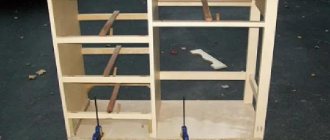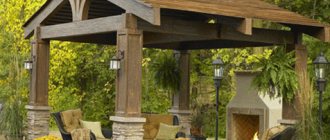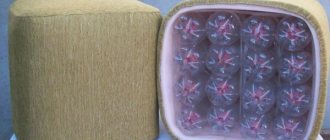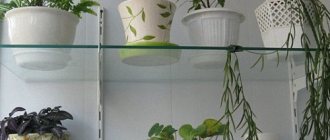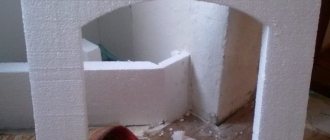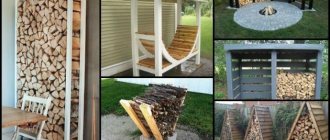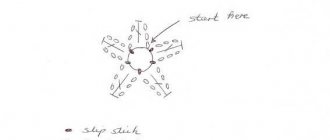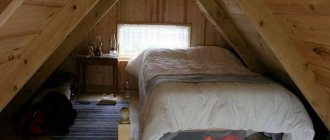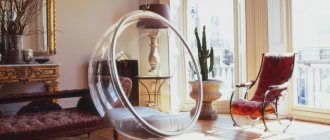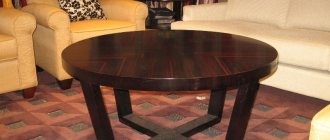Marble products and their advantages
All products made from natural marble have a wide range of applications. This material can be used as finishing for absolutely any room, either independently or together with other finishing materials. Unique texture, beautiful natural pattern, variety of colors make marble furnishings unique in their kind, indicating the impeccable taste of their owners, as well as the luxury and elegance of your home.
The presence of a fireplace in a room makes the environment warmer and more comfortable. If, for some reason, you cannot or do not want to equip a real fireplace with a fire and all the accompanying attributes, consider decorating a false fireplace with your own hands.
To realize this idea, you can use many different materials. At the same time, you can handle all the activities on your own. Familiarize yourself with the features of the available solutions, read the instructions and get to work.
Varieties
So, if there is a real fireplace in the house, then it must be covered with a special protective screen. Even if there are no children or animals in the family, such products will help protect against falling sparks, coals and logs. Simply put, fences prevent direct access to the firebox, which indicates their protective function.
The sizes of screens presented in specialized stores are almost always standard, although sometimes they may differ in size up or down.
You may encounter a problem during the purchasing process, because not all designs are ideal for interiors. In this case, there are two options: make a screen for the fireplace with your own hands, or order the production of the product, which as a result will cost several times more, since they are created according to an individual sketch and are unique.
Considering the types of fencing, the following can be distinguished:
- built-in;
- collapsible;
- composite;
- disconnected;
- united.
Good to know: Why iron stoves heat a room faster than brick stoves
Built-in furnace fencing is probably the most popular of all the options presented. It is not subject to modification after installation throughout the entire operational period, but is mounted directly into the fireplace firebox, sold together with it as a set.
The simplest type of decorative barrier
Products can be standard (stationary) or collapsible. The latter option involves installing it exclusively while the fireplace is burning. After the fire goes out and cools down, it can be removed, and only a metal or forged frame will remain. This product does not have a catcher, but serves only as a decorative addition; it will not be able to protect the child from burns.
As for composite type screens, they also come in two types: separated and combined.
- In the first case, the structure is a set of panels that are not connected to each other. They are mounted on a special support and can protect against sparks that fly out of the fireplace insert.
- In turn, the combined fence is assembled using hinges and acts as a compact structure that can be removed when it is not needed.
As for the materials for the manufacture of protective screens, it can be CSP (cement particle board), metal mesh, wood and much more.
You can often find products made from metal mesh with a fine mesh. This material is quite practical because it has an increased resistance to fire. That is why the fence is located as close as possible to the stoves.
Homemade wooden barrier
Manufacturers offer products made from heat-resistant glass. Together with them, fireplaces become even more interesting and safe. With all this, there are screens that are not so safe; they are made of wood or fabric impregnated with a solution that reduces the level of ignition. They are mounted in special frames, and if fences are not used, then the products can be removed from the fireplace.
Good to know: How to prepare fireclay clay for laying a stove, how to mix the solution
What can you make a decorative fireplace from?
Craftsmen have come up with a variety of designs for false fireplaces. We present to your attention an overview of the most popular of them.
Brick
This material allows you to bring the design of the decorative structure as close as possible to the appearance of a real fire. The false fireplace is laid out from decorative or facing bricks for jointing.
Anyone who has at least once encountered masonry work can handle this activity. However, you must first make sure that the existing floor can support the weight of the finished structure, especially if it has large dimensions.
A beautifully laid out brick decorative portal does not need any additional support. To decorate it, it is best to use a massive wooden shelf - the combination is very successful and attractive.
laminated chipboard
Laminated boards and other similar materials are perfect for decorating false fireplaces.
In order for the structure to have a neat and attractive appearance, it is necessary to thoroughly prepare for the upcoming work. Preparation comes down to creating a drawing indicating all the dimensions of the future false fireplace. Based on this drawing, you can order cutting of the slabs from a specialized company, or you can do it yourself if you have the required skills.
If you want to save money, laminated boards can be replaced with a more budget-friendly analogue - chipboard. Once the structure is assembled, you can customize it to your liking.
Polyurethane
Polyurethane decor
Products made from polyurethane are used mainly to decorate ready-made structures. However, if desired, all kinds of moldings, platbands and half-columns can be glued directly to the wall. Such a design will not look like a full-fledged fireplace, however, special decorative techniques will allow you to benefit from the portal, making it look like a real fireplace.
For example, you can attach a mirror to the back wall of the “firebox” of such a fireplace. Thanks to this technique, the depth of the “firebox” will increase. To enhance the effect, you can attach a wooden shelf, stylized as a fireplace, above the portal.
This material is most often used to decorate false fireplaces. Drywall is characterized by extreme ease of assembly and goes well with a wide variety of finishes. From sheet material you can create spatial forms of almost any complexity. At the same time, the cost of drywall makes it accessible to a wide range of buyers.
Sheet construction requires mandatory finishing. But this is rather an advantage of the material, rather than its disadvantage - over time, the cladding can be changed without dismantling the decorative portal itself.
Beautiful fireplace made of plasterboard with an unusual plaster finish
Types of screen devices
Over the long history of using fireplaces, a huge number of various screening systems have been invented, most of them, with the massive spread of steam heating, have been forgotten and abandoned. With the return of fashion and a surge of interest in fireplaces, many models have been restored and some have been reinvented by enthusiasts and firms specializing in the construction of fireplaces.
Modern fireplace screens can be divided into several main groups:
- Decorative shielding structures. Such products largely copy the styles and forms used in the 19th century;
- Utilitarian screen systems can be folding, removable or stationary. This design is made as safe and easy to use as possible, without pretensions to decorative design and exquisite design;
- Homemade screens for the fireplace insert are built with your own hands, according to your own ideas and ideas.
Important! The desire to make a screen to block the fireplace with your own hands is often associated not so much with the desire to save money on a purchase, but rather to get the most convenient and effective option for protection from the fireplace flame.
Decorative version of the shielding structure
Most often, screens are made in the form of a folding screen of three sashes. If necessary, the structure was unfolded and installed on the fireplace fireplace.
Due to the broken pattern, when unfolded, the structure was quite stable, so there is no need to use any additional fasteners or stands.
The vast majority of fireplace screens of the past era were made by forging and casting bronze. They turned out to be very convenient and practical, so modern craftsmen are happy to copy forged structures.
In modern models, heat-resistant glass is used instead of gratings and curlicues made of cast iron. A skillfully selected surface relief makes the play of fire in refracted rays unique.
An example of the most original folding design is a model of a bronze screen made in the shape of a peacock's tail or a fan. This device is easy to unfold and perfectly protects the room from heat and soot emissions from the fireplace. When folded, such a device can be easily hidden in a closet.
In addition to folding options, for large fireplaces they use small-sized rack-mount screens that can be moved, moved aside, but most often they are constantly in front of the hearth, they are not removed, even if the fireplace insert is not used for a long time. Such screens reduce drafts that inevitably arise in the fireplace during strong winds or frosty weather.
Stationary screen options are most often made in the form of metal flaps that cover the firebox opening
Modern fireplace screen designs
A forged structure in the Renaissance style does not always fit well into the interior of an apartment or house. Most fireplace owners prefer not to reinvent the wheel and not overpay for historical accuracy, but to buy a simple, practical screen made of heat-treated glass.
Most often, this is a folding or portable design with a convenient support and handle for carrying the device heated in front of the fireplace. The glass surface can be made matte, or in the form of sectors with different refraction angles. This solution allows you to clearly see the state of the fire in the hearth, but at the same time the light flux from the flame forms a very interesting pattern on the surface of the glass.
In addition to glass, all kinds of meshes stretched over a stainless steel frame are widely used. To increase efficiency, the mesh is treated with a special matte black coating that improves heat absorption.
In the luxury segment, manufacturers offer exact copies of antique bronze screening grilles.
For a country fireplace, you can purchase a simpler and more practical steel or composite screen with a heat-insulated handle.
Homemade fireplace screens
You don’t have to buy a screen; you can easily make it yourself. For the simplest options, you can use the standard scheme:
- The screen frame is made of steel angle with a shelf width of 25 mm. Two steel rods, 20-25 cm long, are welded into the base of the screen. With an optimal fireplace firebox height of 70 cm, this will be enough to ensure the stability of the structure;
- The plane can be covered with a homemade mesh made of thin copper wire, or you can assemble an openwork structure from steel wire rod, as in the photo;
- In the upper part of the screen frame, it is necessary to weld two pieces of 6-8 mm reinforcement, curved in the shape of an L. Wooden handles are placed on the free ends of the fittings for easy carrying of the screen.
This design for a fireplace can be made folding in the form of three sections; to do this, it is enough to connect three fragments of the frame using ordinary door canopies. To give the device a more presentable appearance, the steel mesh can be coated with a thin layer of spindle oil and heated to a high temperature. As a result, a thin-layer blued coating is formed on the steel surface of the screen.
The most non-standard version of the protective arrangement can be considered a screen made of chains, shown in the photo. Despite its unusual appearance, the efficiency of this screen is significantly higher than many industrial designs.
False fireplace made of plasterboard: step-by-step assembly instructions
Instructions for creating a false fireplace yourself will be discussed using sheet plasterboard as an example.
The first stage is preparation of tools and materials
Start by preparing your kit for work. First of all, you will need the drywall itself. When choosing a material, be guided by the features of the selected finishing cladding. If you plan to finish with tiles, it is better to buy a moisture-resistant modification of drywall.
To fasten the frame elements, buy self-tapping screws. The recommended length of the fasteners is 1.4-1.6 cm. You also need to buy self-tapping screws with a countersunk head for fixing the sheets. In addition, you need to purchase dowel nails for attaching profiles to the floor and walls.
Next, focus on the features of the selected finish. If you are going to wallpaper or paint the portal, purchase a primer and putty. If the false fireplace will be tiled, buy tile adhesive and grout for the joints.
Select the required amount of materials individually, taking into account the dimensions of the future decorative fireplace. Plasterboard construction can have a wide variety of sizes. When choosing a specific option, be guided by the available space and personal preferences.
| Thickness | Size | Square | Weight |
| 12.5 mm | 1200x2500 mm | 3 sq.m | 28.9 kg |
| 12.5 mm | 1200x2700 mm | 3.24 sq.m | 31.2 kg |
| 12.5 mm | 1200x3000 mm | 3.6 sq.m | 34.7 kg |
The set of necessary tools includes:
- screwdriver;
- electric drill;
- scissors for cutting metal;
- level;
- roulette
The second stage - installation of the frame
First step. Mark the walls and floor to install the profiles. Work according to the drawing. Place marks taking into account the selected dimensions of the fireplace.
Second step. Secure the guides along the marked lines. If you are fixing it to a concrete surface, first attach the profile to the base, drill holes according to the markings, insert dowels into them and after that attach the guides.
Third step. Install the posts into the guides. Fasten the products using self-tapping screws.
Before attaching the profiles, it is recommended to check the evenness of the wall using a plumb line. If deviations are detected, fix the guides using direct hangers. These products will allow installation of products strictly vertically.
First, assemble the frame for the entire structure, then for the portal with a recess for the “firebox”. To give the base greater rigidity, connect long horizontal profiles and vertical posts with additional jumpers.
If desired, you can give the firebox opening a curly shape. To do this, just carefully cut through the stiffening ribs of the mounting profile and bend the product in accordance with your idea.
The third stage - lining the frame with plasterboard
Mark the sheet according to the dimensions of the fireplace and cut out the necessary parts. It is most convenient to use an electric jigsaw for the material. If this is not available, cut with a simple wallpaper knife. In this case, you will need to first cut the cardboard layer on one side of the sheet, carefully break the board, and then cut the second layer of cardboard.
Fix the sheathing elements to the frame. Screw the screws into the material so that their heads are slightly recessed. The recommended spacing of fasteners is 100-150 mm.
There shouldn't be any problems attaching the sheets. Even without such experience, you can cope with the sheathing. Just remember that this is a relatively fragile material, so try not to drop it and do not press too hard on the screwdriver when screwing in the fasteners.
Video - Making a false fireplace
Stage four - finishing
Having covered the frame with sheets of plasterboard, all you have to do is complete the finishing decoration of the structure. When choosing a finishing option, focus primarily on the design features of the room as a whole.
Most often, artificial stone, decorative brick, etc. are used for cladding false fireplaces made of plasterboard. To attach finishing elements, tile adhesive or liquid nails are used. When tiling using tiles of the correct shape, lay them with equal gaps. To decorate them, use special plastic crosses.
Brick or stone decoration is unlikely to fit into a modern interior. In such a situation, it is best to use paint or decorative plaster to finish the fireplace .
The surface must first be carefully treated with putty, sealing the joints between the sheathing elements and eliminating any kind of unevenness. After puttying, the surfaces are additionally sanded with sandpaper.
Otherwise, when choosing a finishing option, be guided by your taste preferences.
Finally, all you have to do is install an electric fireplace in the “firebox” opening or decorate the free space at your discretion. For example, instead of installing an electric fireplace, you can install warm and soft lighting in the firebox - an excellent option for a classic interior. A more modern and bold solution is to decorate the “firebox” using multi-colored LED strip.
You can use a mirror to decorate the back wall of the firebox. Attach it to the surface, and line the bottom of the firebox with decorative logs or other material, for example, shells and pebbles.
By installing several candles of different shapes and sizes in the firebox, you will create a real fire in your fireplace.
There are many ideas for decorating a false fireplace. You can use the proposed solutions or come up with something yourself - everything is limited only by your imagination.
Good luck!
TOP 10 best hearths and electric fireplaces
| Photo | Name | Rating | Price |
| #1 | ⭐ 99 / 100 | ||
| #2 | ⭐ 98 / 100 1 — vote | ||
| #3 | ⭐ 97 / 100 1 — vote | ||
| #4 | ⭐ 96 / 100 1 — vote | ||
| #5 | ⭐ 95 / 100 | ||
| #6 | Hearth RealFlame Epsilon 26 SIR | ⭐ 94 / 100 | |
| #7 | RealFlame Fobos Lux BL S | ⭐ 93 / 100 | |
| #8 | Electrolux EFP/W-1100RRC | ⭐ 93 / 100 | |
| #9 | Royal Flame Dioramic 25 LED FX | ⭐ 92 / 100 | |
| #10 | RealFlame Dewy | ⭐ 91 / 100 |
Prices for electric fireplaces and stoves
Electric fireplaces and stoves
Video - Do-it-yourself false fireplace
An electric fireplace model with an ultra-modern design. The body of the device is made of high-tech plastic; the back wall has 3 color modes. The hearth lighting has 10 different shades. You can change any settings using the remote control. A type of decorative fuel is stone dummies. An electric fireplace can be built into a portal or any other furniture, or hung on a wall.
- remote control control;
- there is a shutdown timer;
- wide selection of firebox and wall lighting;
- the fireplace quickly warms up the room;
- The device is economical in energy consumption.
- not found.
Electric fireplace Royal Flame Space 2
Model of an electrical source with a 3D effect. The user has the ability to adjust the flame level using the control panel. Performance in heating mode is a maximum of 1.5 kW, allowing you to heat a room of up to 30 square meters. The device has 2 heating modes and overheat protection.
- control settings using the remote control;
- can be integrated into any portal;
- 2 heating functions: 0.75 and 1.5 kW;
- wood cracking sound effect;
- presence of a timer.
- high price.
Electric fireplace REALFLAME 3D FIRESTAR 33
A modern electric fireplace design using the latest technology. The device has a rounded shape and large width, and thanks to its ultra-thin depth it can be built into any furniture or niche. The manufacturer offers the model in four colors. The body of the electric fireplace is made of MDF, the inside is lined with heat-resistant metal tiles. Due to this design, the risk of burns is eliminated, which is very good for owners, especially for families with small children. The flame simulation function and the heating mode are independent of each other, but if necessary they can be combined. Consumers noted the modern appearance of the device, the realistic image of a fire, its sound effect and the ability to replace modes with a control panel.
- two operating modes are independent of each other;
- the presence of a “crackling fire” function;
- control of settings using the remote control;
- great design.
- no timer.
Electric fireplace Electrolux EFP/W-1200URLS
Mounted model of electric fireplace with a power of 2 kW. The device has 3 operating modes: two heating and decorative. It is possible to choose the flame visualization option: wood or coals.
- control settings remotely;
- there is a sound effect of crackling wood;
- During heating mode the fan is noisy;
- no timer.
Electric fireplace Electrolux EFP/W-1250ULS
Built-in electric fireplace model. It can be installed either in the portal or without it. Decorative image with the effect of an active flame. Thanks to the viewing angle and 3D effect, the electric fireplace can be viewed from different angles.
- suitable for rooms with any interior;
- there is an air humidification function;
- You can adjust the flame level.
Regardless of the fuel type and design, every fireplace looks stunning. An integral element of the design is always the top shelf, on which various decorative elements can subsequently be placed.
You can plan and install the countertop both at the initial stage of building the fireplace and after all the work has been completed. However, before you begin the process itself, you need to get acquainted with the types of shelves and understand how best to build them.
Interesting wooden portal
Types of materials
Most often, the following materials are used to create these products:
- Various types of natural wood.
- Artificial stone fireplace shelf.
- Shelf made of natural stone.
The first two options are the most accessible. To create a countertop made of natural stone, you will have to spend a considerable amount of money, but as a result, the owner will receive a luxurious product that emphasizes the refined taste and high status of the residents. For the first experiment, if you plan to make a shelf with your own hands, it is better to stick with wood. It’s easier to work with because the material is malleable.
Impressive stone structure
If you want the shelf above the fireplace to be made of natural stone or its imitation, then you will have to buy a finished product, or order it according to the dimensions of the structure. The fact is that to process stone and create any elements from it, special equipment is required.
Material of protective screens
Today it is no longer customary to make protective screens, as it was done in the old days, when the main material, especially for not very wealthy people, when they asked for a lot of money for a piece of good iron, and mainly raw wood was used to protect against flying sparks, which had to be replaced periodically.
Today, the following materials can be used for protective screens:
- metal fine mesh - it is resistant to temperature changes and heating, due to this it can be located in close proximity to the fireplace;
- glass fireplace screen - especially popular in modern interior design; it will fit into almost any interior and will look great against the backdrop of a fire or an extinguished fireplace.
- You can make a fireplace screen with your own hands from non-flammable fabric stretched over a frame, but this method is extremely impractical and unreliable.
(See also: How to make an automatic fireplace)
Mounting methods
If we consider options for fixing the purchased shelf, then there are only two ways: mount it into the structure or attach it to supports. The technology of embedding into the overall structure is suitable for products that use stone or other heavy material due to their large weight.
In addition to exerting high pressure on the structural support, the material also does not allow it to be secured with nails or screws. If the fireplace has a shelf made of stone, then it should be purchased before the structure is erected.
A wooden shelf can be fastened to the base of the fireplace using special supports and clamps. Due to the fact that you can easily drive a nail or screw a self-tapping screw into the presented material, you don’t have to worry that the tabletop will fall off. The supports most often take the form of wooden blades located inside the structure, but they can be forged, in the form of a beam attached to the front of the fireplace in a horizontal direction. Another popular support option is side columns.
Cassette fireplace in the form of a home hearth
When is a screen needed and what is it made from?
A protective screen for fireplaces is not always needed, but there are a number of cases when this attribute is one hundred percent justified and necessary:
- The main function of such a partition is to protect the room from fire and accidental sparks from the firebox. The fact is that in the process of burning coal or wood, an accumulation of gases occurs, which at a certain moment burst, and you hear a characteristic and pleasant crackling sound. However, sometimes such an explosion can be strong and thus begin to emit sparks outside the firebox, which can lead to a fire;
- Such an attribute can be installed not only to protect the firebox itself, but also to protect some parts and structural elements of the fireplace, including the electric one. Many elements of biofireplaces and electric fireplaces also heat up and both adults, children, and pets can accidentally get burned by them;
- The screen also serves as a decorative component, which is why it can be used to decorate not only wood-burning fireboxes and electric fireplaces, but also false installations. Thus, you can give them maximum similarity to the original and emphasize a certain image, style;
- Also, this device has another very useful function. It is intended to increase efficiency and heat transfer from the heating unit. This design is able to gradually accumulate thermal energy and thereby distribute it throughout the room.
Before you buy a protective screen for fireplaces, you need to decide what material it will be made of. Among the large assortment and choice, the most popular products are:
- Brass;
- Bronze;
- Copper;
- Cast iron;
- Steel;
- Ceramic or glass ceramic.
Each protective screen for a fireplace can be purchased in Moscow in specialized stores or in custom-made workshops. The most popular and in demand today are products based on steel and cast iron. The materials are inexpensive, durable, easy to maintain, and well tolerated. High temperatures and their changes. Such variations are often produced in Gothic, classical and modern designs, with forging elements, three-dimensional patterns, designs and glass-ceramic transparent inserts.
Among true connoisseurs, varieties based on copper or brass, which are distinguished by their low weight and long service life, are especially revered. The method of execution is casting, as a result of which the most original and whimsical compositions are formed, presented in the form of peacock feathers, birds, flowers, curls, and ornaments.
For connoisseurs of modern trends, in the spirit of modernity and high-tech, the ideal solution would be to purchase an item made of tempered heat-resistant glass or glass ceramics, which can withstand prolonged exposure to high temperatures. Due to its complete transparency, combined with durability and easy maintenance, such glass remains clean for a long time, does not fog up, and soot and soot do not accumulate on the surface. Due to this, you can safely enjoy a fire burning in the hearth, which will be clearly visible.
For admirers of such styles as retro and classic, the stained glass composition, presented in the form of a multi-colored and steel mosaic, with many pieces of glass, will certainly appeal to their taste. Thus, many masters create original compositions and entire drawings.
A fireplace screen is not just decoration, but primarily protection; this must be remembered at the time of purchase and selection, thereby giving preference to reliable designs based on strong, durable, non-toxic and fire-resistant components.
Since modern fireplaces today are primarily a decorative component of the interior or an auxiliary source of heating, you can buy a protective screen in the style that you like best. In this case, you can even place a glass-ceramic variation, which is believed to not accumulate and conduct heat so well and requires constant care and cleaning after each fire.
A fireplace, the grate of which will become a reliable protection against sparks entering the room, should not only be safe and stylish, but also be in harmony and intersect in its design with the fireplace and the interior of the room.
Features of stone products
Before getting acquainted with the features of this product, experts pay attention to the fact that a tabletop of this type is installed during the construction of the fireplace.
If the structure is of an open type, which is completely inside the room and is not connected to the wall, then the installation process will be less labor-intensive. Natural stone itself has a lot of weight (kitchen tables are also made from this material, so it’s not difficult to imagine how heavy the shelf will be). Actually, all that needs to be done to install the shelf is to purchase it according to the dimensions of the structure, buy a special fixing solution, apply it to the top of the fireplace, and then place the purchased shelf on it. In this case, additional fixation of the product is not required.
If the fireplace is a built-in type, then the shelf purchased in advance should also be mounted into the wall. During the installation process, it is necessary to calculate the width of the product and the depth of its immersion in the wall. Make sure that the fireplace shelf protrudes approximately 15 cm forward in relation to the entire structure. As a result, the structure will be securely fastened both to the base of the fireplace and to the brickwork.
Original bedroom design
It is worth considering the situation when the fireplace has already been built, and the desire to decorate it with a shelf has just appeared. There may also be two scenarios here. In the first case, when rough wall decoration is used in the room, do the following:
- Make a channel in the horizontal direction (depth 5 cm, and width corresponds to the width of the shelf).
- Clean the made groove from debris and dust.
- The shelf is inserted and secured with small, inconspicuous wedges.
- Finally, the joints are sealed with a putty mixture.
However, if you follow a simpler path, then you need to purchase special columns for the fireplace in the store and install them on both sides of the firebox. To fix the element and the surface of the hearth, special glue is used. After drying, glue is applied to the top of the columns, and a stone shelf is placed on them.
Do-it-yourself protection: option two
Next, we will consider the option of a fixed protection, for the manufacture of which we will need:
- Bricks, with the help of which the entire part of the installation is installed;
- Metal corners for assembling and creating guide elements;
- To secure the protection you will need a grille;
- Materials with characteristic heat resistance and strength (the list depends on your idea and decor).
Step by step guide:
- The floor covering is well cleaned of dirt and, if necessary, sealed. After which marks are applied to it and their accuracy is checked;
- A low pedestal is made of brick. Cement mortar is used for bonding;
- Next, several pedestals are erected. Their height should not be lower than the middle of the combustion chamber;
- Prepared metal corners must be embedded in brick pedestals;
- Using fire-resistant polymer liners, we secure the grille and glass fire-resistant elements, which will act as protection.
You can view step-by-step photos of this and other assembly methods in this article.
Forged parts, elements and patterns add sophistication and elegance to the interior
Screen with steel base and two doors, support legs and fine mesh screen
Important: no matter what type of protective base, you should remember that complete tightness in this case is not safe and is unacceptable. Any screen should have small gaps, both at the top and bottom. This is necessary so that heated air masses and oxygen can circulate well and evenly, get inside the fireplace structure and back.
Do-it-yourself wood production
The tabletop above the fireplace is a necessary decorative element. It completes the design and makes it possible to further decorate it with photographs, vases or candles. The product itself is practically no different from ordinary wooden shelves used in the interior, which are mounted into the wall.
Original solid timber construction
Making a mantel begins with collecting the necessary materials and tools, including:
- Wood of the selected species to create the upper part of the shelf (a block 1.23 m long and 22 cm wide).
- Wood of the required species for the construction of the lower part of the shelf (a block 1 m long and 22 cm wide).
- A tree of a suitable species for constructing the lower part of the shelf (a block 1 m long and 11 cm wide).
- Wooden cornice for the front part (length 1.3 m and width 9 cm).
- Wooden parts for the side parts, two pieces (length 13 cm, width 9 cm);
- Support beam (1 m long and 11 cm wide).
The shelf above the fireplace, created by yourself, is wooden, so to attach it you will need nails (regular, slate) and screws for working with drywall. Next, the manufacturing process itself is presented for consideration.
Manufacturing diagram in accessible form
First of all, you need to start creating the upper and lower parts of the shelves. In addition, it will also be necessary to cut the front beam (the cutting angle is 45° degrees). After this, you need to make holes in the bars into which the screws will be screwed. Using a milling machine, you can make an edge in the panels located on the sides and top. The step width is no more than 30 cm, after which the workpiece is sanded with sandpaper.
The next step is to secure the completed pieces. To do this, first glue is applied to all the elements, then the upper parts, lower and side parts are connected, and then they are fixed with slate nails. The same scheme is used to fix the top panel.
The cornices for the shelf under the fireplace are cut at an angle of 45° degrees; if this is not done, the elements will not connect to the lower and side parts. For an accurate fit of the planes and the correct angle, it is better to use a miter box. Then the blanks are fixed to the main structure with glue, and 40 mm slate nails are driven into them.
After this, you can install the shelf support beam. Using a magnet, you need to understand where the stand is located inside the wall. Then, using a simple pencil, they draw a horizontal marking line, make beacons, and attach the beam itself with a pair of screws. The shelves will need to be attached to the support.
Fireplaces have been used since ancient times. They are still relevant today. Their functions have undergone changes: now they are used not only for heating the home, but also for decorating it. There are many people who prefer a decorative portal for a fireplace without a flame or heating function. Today, manufacturers offer a huge number of options, so there is plenty to choose from.
The range of these portals is very large
DIY making
If you couldn’t find a childproof fence for the fireplace that would fit best into the interior, you can make it yourself. For self-production, it is better to choose a built-in design. Such a product will have a reliable fastening, which guarantees safety and stability.
For manufacturing you will need the following materials:
- Brick for building the foundation.
- Metal corner for guides.
- Decorative grille for the screen.
- Fire resistant fixing materials.
The permanent structure can be used to enclose a stove in a bathhouse or a fireplace. First of all, it is necessary to make a drawing of the future product. This should be done on a full scale, which will allow the material to be properly used and cut in the future.
After this, it is necessary to mark the area around the furnace where the protective screen will be erected. At the next stage, this area is cleared of the floor covering, which is not resistant to fire and can ignite. Then you need to lay brick (with cement mortar) and build a cabinet, or make a wooden frame. The height of the product should be approximately to the middle of the fireplace insert.
Tempered glass fence
The next step is to mount the metal corners into the frame; after the solution has dried, they will need to be decorated decoratively. When the preparatory work is completed and the fixing composition has finally hardened, it is necessary to install glass fences on this frame (the material must be resistant to high temperatures), secured to polymer inserts.
It is worth paying attention to this point: no matter whether you use slabs when installing the structure or other material, there must be space in the upper and lower zones of the firebox, otherwise air will not be able to circulate, which will reduce the efficiency of the fireplace.
Device history
The facade of the fireplace is its portal, which is the frame of the device on the outside, equipped with a recess for fuel. If you look at the history of the hearth, you can see the portals in the form of a simple masonry of stones. For the first time, decorating fireplaces began to be used in the Middle Ages. It has undergone changes over time, and now there is a wide variety of frames.
With the development of the heating system, the fireplace lost its former meaning and began to be used as a decorative element intended to decorate the interior and give it elegance and luxury. Electric fireplaces have appeared that imitate a burning flame, but do not provide warmth. In connection with the decorative bias, the external design of the fireplace façade began to play an important role.
In this video you will learn how to make a false fireplace with your own hands:
Installation Rules
If a fireplace is installed in a country house and operates exclusively in the summer, then it is better to make an external screen for it. It's quite simple to build. First you need to prepare the materials:
- profile for making the main frame;
- fasteners;
- protective material in the form of mesh or glass;
- special hinges if a folding structure is planned.
The easiest way is to make a composite screen, but first you need to make a support, and it must be heavy and stable enough so that it does not tip over on the floor when touched. It can be mounted from a metal sheet. You also need to take into account that the damper should be 30 cm wider than the frame, and 15 cm longer than the frame. This product will serve as a stand, to which a support is attached on both sides.
The frame itself is made in the shape of the letter T. To do this, two steel pipes of the required size are welded to each other. The height of the vertical support pipe must be at least ¾ of the height of the fireplace insert. In this case, it will be convenient to add fuel and you won’t have to worry about sparks. The horizontal pipe will become the support pipe. In this simple way you can assemble a simple fireplace screen.
Homemade facades
Many people are interested in how to make a fireplace portal with their own hands. To do this, you need to take into account several important factors. First of all, you need to decide on the material for the facade. If we are talking about decorative devices in which there is only an imitation of fire, then the raw material may well be chipboard, parquet boards or even laminate.
Another common technique is the combined use of galvanized metal profiles and drywall. Drywall is a fairly flexible material that can take on any shape. It is easy to cut. At home, it will not be difficult to make any elements for the portal from it. A metal profile is needed to create the “skeleton” of the fireplace.
Craftsmen, when deciding how to make a portal for a fireplace with their own hands, often choose timber and plywood. These budget materials are a worthy alternative to wood. They go well with metal profiles and look good with additional cladding made of artificial stone or ceramics.
First you need to decide.
what material will you use Wood is one of the most preferred materials
to create various designs. It is also perfect for a fireplace portal. The wooden facade is characterized by elegance, grace and solidity. But it is worth taking into account that wood is susceptible to environmental influences. High humidity and temperature fluctuations can reduce its service life.
Chipboard or MDF is a simple and affordable material. Even old disassembled furniture can be suitable to create the facade of a decorative fireplace. Do-it-yourselfers are often interested in how these materials differ and which one to choose. Their differences are significant:
- with the same thickness, MDF is easier to process and twice as strong as chipboard;
- The good flexibility of MDF allows you to create an interesting relief.
All materials considered can be combined to create unique designs.
Cladding materials
To create a decorative coating, stone (artificial or natural), special decorative film, stucco molding, tapestry, as well as acrylic or water-dispersion heat-resistant paint are used. In the case of an electric fireplace, you can use all of the listed materials. This becomes possible due to the absence of open heating parts.
The choice of material for creating a portal is influenced by financial capabilities, skills and abilities in its processing. The shape of the fireplace and its design also matter.
What distinguishes an electric fireplace portal from a classic one is the mandatory presence of a tabletop. For it you also need to choose a suitable material: wood, plywood with increased thickness or MDF.
Tools and components for creating a fireplace portal with your own hands:
- metal profile in the shape of a cube;
- plasterboard profile, sheets;
- insulating materials for construction;
- spatulas;
- putty mixture;
- brushes of various sizes;
- mesh to finish seams;
- metal corners;
- sandpaper;
- table top;
- metal frame for construction.
You will need the appropriate tool, e.g. putty knife
Algorithm of actions
Making a fireplace yourself should be taken seriously and carefully. Everything must be done carefully and exactly according to the instructions. You should start by determining the shape of the portal. It will depend on the electric fireplace. For a corner device, a triangular shape is used, and for fireplaces located along the walls, a square or rectangular shape is used. Sequence of further actions:
- Make a design drawing on paper. In order not to waste time, you can use special software by making a drawing on a computer. Here you can calculate the required volume of building materials.
- Assembling the lower part of the frame. Vertically attach the metal posts to the base of the frame.
- Strapping the racks at the top. Installation of ports. Fastening sheet material.
- Connect the portal to the tabletop, covering it with paper or film in advance to protect it from damage.
- Check for seams and cracks in the structure. You need to examine each part very carefully. If necessary, all defects should be repaired with putty.
- Cladding of the structure. It is better to use stone or tile for finishing as a material. They have the longest service life.
- Wait until the structure dries. Next, you can begin installing the fireplace.
To determine which direction to move in when creating a fireplace portal, it is recommended to look through specialized catalogs and magazines selling fireplaces. They will help you choose the shape, style and material for the planned product.
When choosing a material, you need to ensure that it matches the design and style of the fireplace itself. When designing a frame, you need to check all the data several times to ensure that it is accurate and correct. Defects can lead to problems in the process of creating a facade.
If wood is chosen as the material, you need to use a special synthetic-based glue to secure the elements.
When making calculations, you need to take into account the size of the room in which you plan to place the fireplace. For small areas, it is recommended to abandon the portal altogether, building an artificial hearth into the wall, furniture or special partitions. An electric fireplace should be purchased before the construction of the portal. Although all dimensions and characteristics are indicated in the catalog, there is a possibility of making an error when calculating the dimensions (for example, due to protruding decorative elements or wires).
The fireplace is in demand nowadays; it has come to be considered as a decorative element. The portal is an important part of the fireplace
, its façade. You can make it yourself, resulting in an original and exclusive product.
A wide selection of materials for finishing and interior items makes it possible for every home owner to try to realize their personal design fantasies and preferences to the maximum. You can do this by installing a fireplace in your home. This interior detail will give the room a feeling of warmth, comfort and will be conducive to good rest.
Making portals for fireplaces: types of design
A fireplace, be it a conventional wooden one or an improved electric one, which is not only a structural device for providing warmth in the house, but also a stylish decorative element of the interior, is now included in every fifth home in our country. When determining the design of the device, the main component of the fireplace plays a decisive role, which allows you to get away from the usual and already boring heating devices.
Choosing a fireplace portal is not an easy question, and sometimes even some people abandon their plans at the initial stage, realizing that the idea of installing the object will not correspond to the design of the entire room.
Those who were not afraid of difficulties and decided to install a fireplace in their home need to know a few tips and positive aspects that will be provided to them when they reach the final goal of their plan. In addition, during the arrangement it is necessary to develop drawings and follow the sequence of construction stages. And they begin with choosing the design of this element.
The main types of portals for an electric fireplace:
- Classic design. Due to its rigor and quality, this type of fireplace is common in country houses.
- Country style portals. For wood-burning fireplaces they are the best solution.
- Fireplace portals in the widespread Art Nouveau style. They are a great addition to rooms with different stylistic solutions.
- High-tech portals involve the use of metal and glass for their equipment. Portals are designed in this style quite often.
When choosing the style in which you will equip your fireplace portal, you need to take into account the cost of building materials that will be used during the construction process.
Types of fireplace nets
A good option for a protective screen is a screen in the form of a fine mesh. The fireplace mesh also serves a decorative function. The fine-mesh mesh does not interfere with the sound of the crackling firewood, which makes the room even more comfortable.
Fireplace nets can be standard, which can be found in any hardware store, or custom-made. The nets, which are made to order according to individual sketches, are distinguished by their originality. On such grids they can make a family coat of arms, images of animals, plants, birds, geometric shapes, and various decorative elements. The fireplace nets themselves are made in unusual shapes. The mesh can be made of bronze and brass.
Fireplace nets are quite popular
According to different classifications, meshes are:
- Height adjustable;
- Stationary;
- With blinds;
- No blinds.
Based on the material of manufacture, steel, cast iron, ceramic, aluminum, and copper fireplace grates are distinguished. They may include brass, nickel, gold or gilding. For the manufacture of gratings, forging and welding techniques are used. They are coated with heat-resistant paint. The fireplace grate should be strong and smooth, as should the surface of the decorative elements. It is important to pay attention to the composition and integrity of the original packaging. Metal mesh is suitable for interior decoration in different styles. For the classic style, forged elements are used, for the modern style - wire structures, and for high-tech it is better to use glass screens.
Do-it-yourself portals for fireplaces
If you are planning to buy an electric fireplace that belongs to a low price category, then you should keep in mind that they are usually sold without additional decorative elements. But don’t despair, all additional accessories can be purchased separately.
However, the most profitable solution, in terms of saving money, would be to assemble the portal from specifically designed kits. It is also possible to independently manufacture the cladding of the element.
Independent work will give you the opportunity to realize all your fantasies and visions on this issue. And also make a careful selection of materials both in terms of quality and price.
The following materials are used for the manufacture of electric fireplaces:
- Plywood or timber;
- Drywall;
- Laminated parquet board;
- Self-adhesive film;
- Polyurethane stucco;
- Acrylic based paint.
The most common material for making fireplaces today is polyurethane. Its budget side allows the material to be used in almost all types
Finishing materials for the fireplace portal
Currently, many people who decide to make a portal with their own hands choose the following finishing materials :
- Drywall;
- Laminated parquet board;
- Natural wood material;
- Plywood or wooden beams;
- Adhesive tape,
- Paint, acrylic based;
- Polyurethane stucco moldings;
Drywall is in greater demand , as it has many advantages compared to other finishing materials.
Initially, you need to prepare the following tools:
- Metal type plasterboard profile ;
- GKL sheets in the estimated number;
- Insulation;
- Putty mixture and two spatulas ;
- Primer;
- Tassels;
- Mesh for seams;
- Metal corner ;
- Sandpaper;
- Metal profile in the form of a box;
DIY polyurethane portals for fireplaces: beauty and ease of finishing
Synthetic polyurethane is one of the cheapest materials. However, due to its inherent versatility, it can be used to make a portal yourself. In most cases, the design of an artificial portal for a fireplace is made from polyurethane stucco molding or solid fireplace kits.
The finish consists of several elements:
- Floor base or called podium;
- Firebox;
- Two vertically located racks;
- Top cover and decorative elements.
There are other modifications in which there is no podium, and the overlays are already built into the surface. U-shaped or corner structures can be mounted directly into the wall of the room.
Fireplaces made of polyurethane can be called the simplest in terms of installation method, fireproof due to their high heat resistance and providing an environmental component for the cladding of the element. The presence of a wide variety of elements and shapes that can be used for finishing will allow you to give the structure any design you desire.
How to make a fireplace screen with your own hands
Built-in fireplace screens are the most reliable. This is due to the fact that their base is well secured, and, accordingly, the screen will not fall anywhere.
It is quite possible to make a screen for a fireplace with your own hands, the main thing is to choose the right materials for the future design
In order to make a built-in protective screen, you need:
- For the base, brick;
- For guides, a metal corner;
- There is a decorative grille for the spark screen;
- Thermal materials.
The work of making a screen includes marking out a section of the fence, removing it from the fire-prone floor covering, laying bricks with cement, and erecting a brick pedestal up to the middle of the firebox. It is also necessary to wall up the metal corners in the cabinets. After the solution has dried, the corners must be decorated. A decorative grille and a fireplace screen made of heat-resistant glass are attached to the cabinets using heat-resistant polymer inserts.
The main thing in building a protective structure is to leave gaps at the top and bottom. This is necessary so that air can circulate freely.
First, a drawing of the composite screen is made. For beginners, a suitable option is to attach separate sheets of protection to the main frame. Simple frames made of steel tube are suitable for the supporting structure.
Making a decorative homemade fireplace box
Having decided on the design of our portal and choosing the material from which we will make it, we can safely move on to the construction work itself.
First of all, we need to make a plasterboard frame for the fireplace. For this we need a standard metal profile, sheets of drywall and self-tapping screws.
We make racks, crossbars, form a box and cover it with plasterboard. Do not forget about the need for high-quality fastening of the guide profile to both the wall and the floor. The presence of a high-quality foundation is a prerequisite for further strengthening both the upper part of the portal and its external decoration. Therefore, it is important to check all stages of work using a level and plumb line, which is especially necessary to avoid even the slightest deviation from the plane.
Decor options that are most often preferred:
- Imitation of brickwork;
- Glass mosaic;
- Hand painted;
- Framing with artificial stone.
Drywall is very suitable for portals with electric heating. It will provide an opportunity to simulate various product options.
Do-it-yourself portal for an electric fireplace
Initially, you need to figure out what form the portal will be . If the fireplace is installed along the wall, then the portal will have a rectangular shape; if the fireplace is installed in the corner, then the portal will be triangular.
A better option would be to draw an image of a visible portal on paper . Here you can turn on your imagination. After you finish with the sketch, you should put the actual dimensions of the portal on it, thereby you can calculate the approximate amount of materials spent. The simplest method of creating a portal for an electric fireplace with your own hands is using plasterboard or plywood.
Main stages:
- Initially, it is necessary to assemble the lower part of the rectangular frame (or triangular, depending on the location of the electric fireplace);
- Then specialized racks ;
- Next you must complete the top trim of the racks ;
- We install the port and firmly attach it to the wall using the corners;
- The sheet material (this can be plasterboard, plywood, chipboard and many others) is secured with self-tapping screws;
- We connect the tabletop to the portal;
- To avoid staining the tabletop in the future, it is better to cover it with paper or a plastic bag;
- The resulting seams and cracks should be covered with layers of putty on the top of the portal;
- Use finishing material to cover the portal. In this case, you should rely on your taste. The finishing can be done with ceramic tiles, artificial stone or other finishing materials;
- After the portal has dried, you can install an electric fireplace inside;
How to make an electric fireplace with your own hands: step-by-step instructions
The fireplace portal is considered the face of a man-made hearth, which provides a brighter and more pleasantly memorable impression of the fireplace. Most often, the portal is used for built-in options. Their distinctive feature is the need to equip a combustion window. Typically, the fireplace lining must be structurally connected to it, and therefore, to decorate a home fireplace, you can use ready-made portals, which are used in accordance with individually developed sketches.
Stages of making a fireplace:
- Decide on the location of your portal;
- Take measurements of the future structure;
- Complete the preparations;
- Strengthen the frame in height and width;
- Fit the electric fireplace to the opening;
- Take care of the electrical wiring;
- Cover the product with plasterboard;
- Saturate the surface with primer;
- Paint with decorative paint.
As decoration, you can safely use acrylic paint, artificial stone, tapestry fabric, self-adhesive film and even plaster modeling. The next stage of work will be the manufacture of a pipe for the hearth podium and a tabletop and mesh. Here you can give free rein to your imagination and choose any fireplace format you like. The work also uses drywall and profiles. Installation must begin by giving the desired shape. Then, by cutting, we make a hole in the upper part of the structure and fasten the frame to the wall with guide profiles. On the contrary, it is necessary to perform the same operation at the same distance. The frame can be connected to each other with the remains of the profile and strengthened using the same method as the portal was fastened. The next step is to cover the pipe with plasterboard, prime it and decorate it. The portal design can be whatever you want. It can be a simple pattern or plating with complex design details. Do not use plywood or wood to decorate the fireplace; they cannot withstand hot air masses and become deformed and destroyed. Upon completion of the work, you can glue the decor, if it was part of your plans. Or perhaps you planned to use minimalist tactics and not complicate it with details. Having done everything as you planned, you can relax by the fireplace and enjoy the work done.0.00 (0 Votes)
